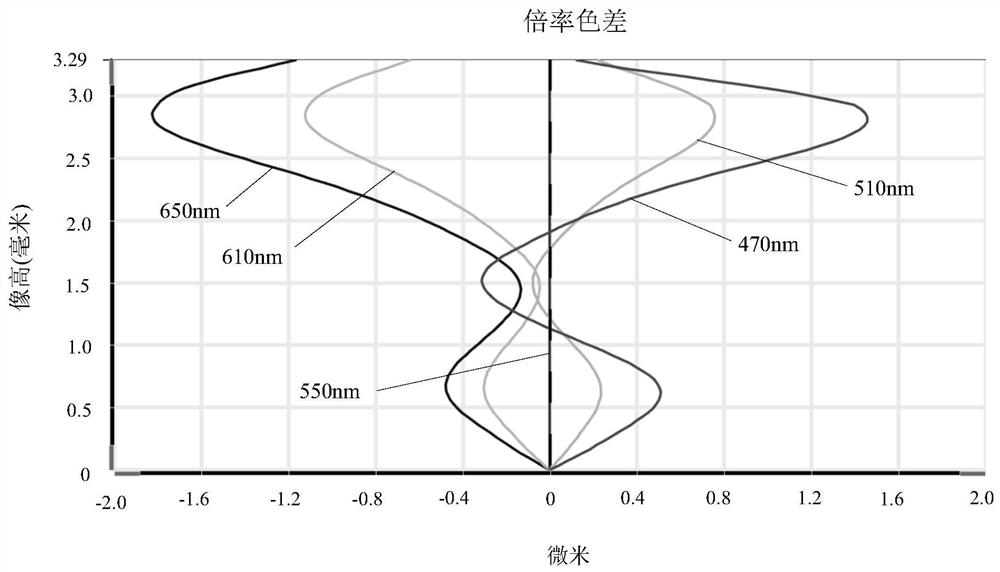Camera Optical Lens
A technology of optical lens and optical length, applied in the field of optical lens, can solve the problems of unreasonable setting of optical power, lens spacing and lens shape, unable to meet the problem of large aperture, ultra-thin, wide-angle, etc., and achieve good optical performance Effect
- Summary
- Abstract
- Description
- Claims
- Application Information
AI Technical Summary
Problems solved by technology
Method used
Image
Examples
no. 1 approach
[0047] Please refer to the accompanying drawings, the present invention provides a camera optical lens 10 . figure 1 Shown is the imaging optical lens 10 of the first embodiment of the present invention, the imaging optical lens 10 including five lenses. Specifically, the imaging optical lens 10 includes, from the object side to the image side in sequence: an aperture S1, a first lens L1 with a positive refractive power, a second lens L2 with a negative refractive power, and a third lens L2 with a negative refractive power. Lens L3, fourth lens L4 with negative refractive power, and fifth lens L5 with positive refractive power. An optical element such as an optical filter (filter) GF may be disposed between the fifth lens L5 and the image plane Si.
[0048] In this embodiment, the focal length of the fifth lens L5 is defined as f5, the focal length of the entire imaging optical lens is f, and the following relationship is satisfied: 1.50≤f5 / f≤4.50, which specifies that the fi...
no. 2 approach
[0135] The second embodiment is basically the same as the first embodiment, and the meanings of symbols are the same as those of the first embodiment. For the structure of the imaging optical lens 20 of the second embodiment, please refer to Figure 5 As shown, only the differences are listed below.
[0136] Table 5 and Table 6 show design data of the imaging optical lens 20 according to the second embodiment of the present invention.
[0137] 【table 5】
[0138]
[0139] Table 6 shows the aspheric surface data of each lens in the imaging optical lens 20 according to the second embodiment of the present invention.
[0140] 【Table 6】
[0141]
[0142] Table 7 and Table 8 show the design data of inflection point and stagnation point of each lens in the imaging optical lens 20 according to the second embodiment of the present invention.
[0143] 【Table 7】
[0144] Number of inflection points Inflection point position 1 Inflection point position 2 Inflec...
no. 3 approach
[0151] The third embodiment is basically the same as the first embodiment, and the meanings of symbols are the same as those of the first embodiment. For the structural form of the imaging optical lens 30 of the third embodiment, please refer to Figure 9 As shown, only the differences are listed below.
[0152] Table 9 and Table 10 show design data of the imaging optical lens 30 according to the third embodiment of the present invention.
[0153] 【Table 9】
[0154]
[0155] Table 10 shows the aspheric surface data of each lens in the imaging optical lens 30 of the third embodiment of the present invention.
[0156] 【Table 10】
[0157]
[0158] Table 11 and Table 12 show the design data of the inflection point and the stagnation point of each lens in the imaging optical lens 30 according to the third embodiment of the present invention.
[0159] 【Table 11】
[0160] Number of inflection points Inflection point position 1 Inflection point position 2 I...
PUM
 Login to View More
Login to View More Abstract
Description
Claims
Application Information
 Login to View More
Login to View More - R&D
- Intellectual Property
- Life Sciences
- Materials
- Tech Scout
- Unparalleled Data Quality
- Higher Quality Content
- 60% Fewer Hallucinations
Browse by: Latest US Patents, China's latest patents, Technical Efficacy Thesaurus, Application Domain, Technology Topic, Popular Technical Reports.
© 2025 PatSnap. All rights reserved.Legal|Privacy policy|Modern Slavery Act Transparency Statement|Sitemap|About US| Contact US: help@patsnap.com



